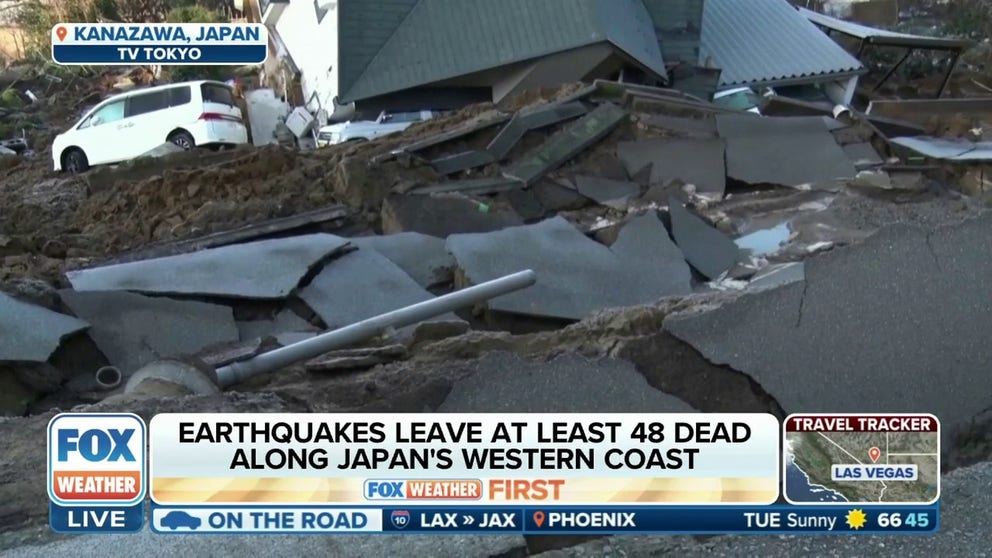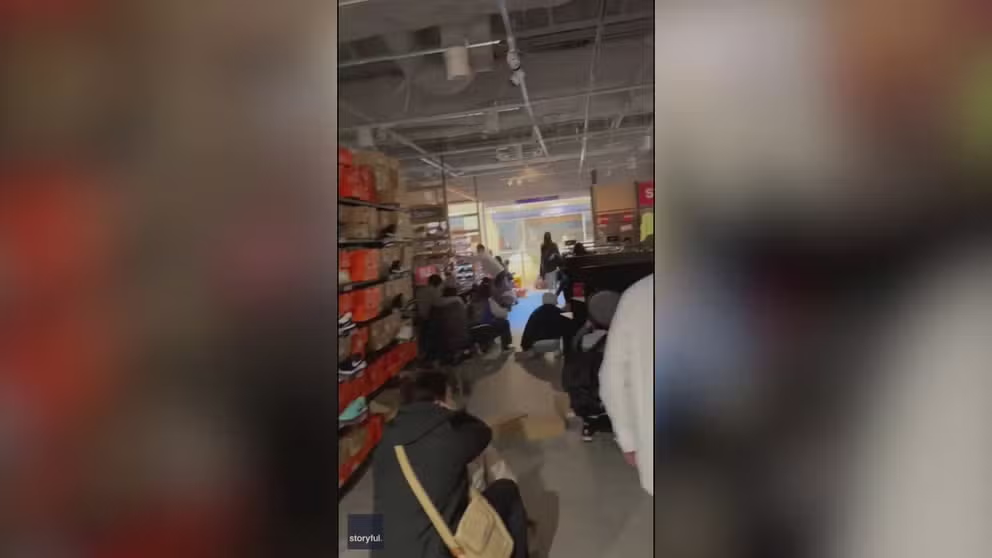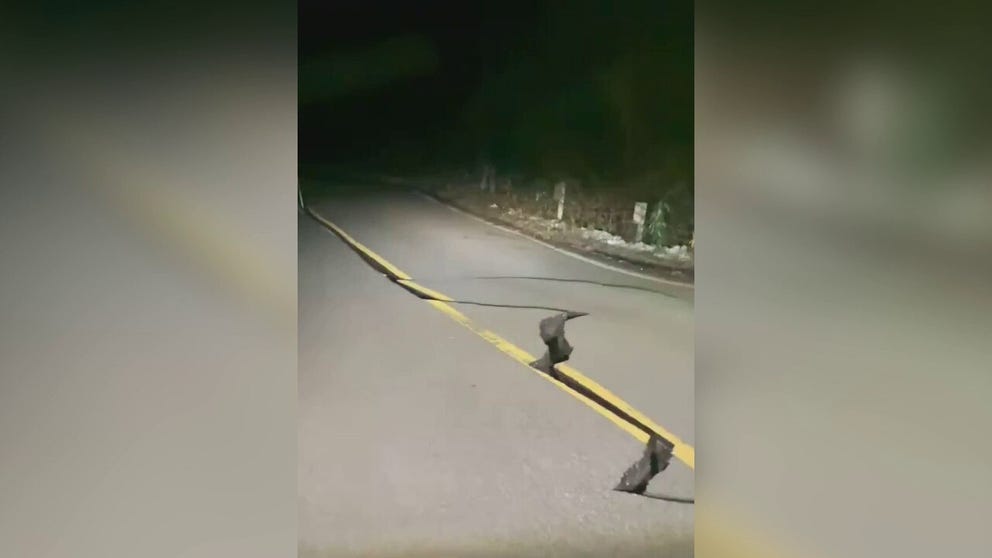Japan earthquake death toll continues to rise as rescuers battle cold to find survivors
Rescue workers in Japan are in a race against time, facing powerful aftershocks as they work tirelessly to locate survivors of a major earthquake that struck on New Year's Day. The quake has caused widespread destruction and loss of life.
Earthquakes leave at least 65 dead along Japan's western coast
A series of powerful earthquakes hit western Japan on Monday, leaving at least 65 people dead.
ISHIKAWA, Japan – A series of powerful earthquakes hit western Japan on Monday, causing widespread damage and claiming the lives of dozens of people. Now, the race is on to search for any additional survivors and get badly needed relief supplies to the hard-hit areas.
Bad weather, freezing temperatures and hundreds of aftershocks since the initial magnitude 7.5 earthquake have only added additional challenges to relief efforts.
The earthquakes caused extensive damage to buildings, vehicles and boats. Authorities also issued a Tsunami Warning for the western coast and a Landslide Warning for Ishikawa, Niigata, Toyama, and Fukui prefectures, according to the Japanese Ministry of Land, Infrastructure, Transport and Tourism.
As tsunami waves hit Japan's western seaboard, people in coastal areas were forced to evacuate to higher ground while the water swept cars and houses away.
Authorities in Ishikawa recently confirmed an increase in the number of deaths from 55 to 65 early Wednesday. According to Reuters, the death toll has risen to 73 as some cities report additional fatalities.
Japan’s Meteorological Agency said there have been nearly 500 aftershocks since the initial quake and warned that "strong aftershocks may occur in the next week." The country is situated on the "Ring of Fire," making it prone to earthquakes.
Earthquake rescue crews have difficulty reaching hardest-hit areas
As many as 33,000 people have evacuated their homes, and some areas have no access to water or electricity as temperatures drop below freezing, Reuters reported. The temperature dropped to 30 degrees at Noto on Tuesday morning.
In response to the disaster, the Japanese military has deployed 1,000 soldiers to the affected regions, where over 3,000 first responders are already present. They are currently working together to assist with rescue and recovery efforts that are still ongoing in the Noto peninsula in Ishikawa prefecture, the epicenter of the earthquake.
WHAT TO DO DURING AND AFTER AN EARTHQUAKE
According to local media, rescuers had warned trapped residents that they were initially having difficulty reaching the northern tip of the peninsula where helicopter surveys discovered many fires and widespread damage. But Reuters reported the government has since opened a sea route to deliver aid, and some larger trucks are now able to reach some of the more remote areas.
More than 500 people were stranded at Noto's airport after the quake, which has closed due to cracks in its runway and access road and damage to its terminal building, Reuters reported.
Shoppers huddled together as a store shook in Oyabe. Koichi Teramae recorded a video at Mitsui Outlet Park after the lights in the store had gone out.
"The shaking was so strong that I couldn’t walk," Teramae said.
JAPAN STRUCK BY DEADLY EARTHQUAKE, TRIGGERING TSUNAMI WARNINGS
Shoppers huddle together as magnitude 7.5 earthquake shakes mall in Japan
Shoppers huddled together as a store shook in Oyabe, Japan, on Monday, after a magnitude 7.5 earthquake hit the Ishikawa prefecture.
Although some train services have resumed in certain regions, many highways remain closed, and water pipes and cell phone services have been severely damaged in some areas.
Footage captured by Hsu TeWei showed people taking cover as items fell from shelves in Kanazawa rail station, located in the Ishikawa prefecture. According to local news outlets, rail officials reported that service out of Kanazawa had been canceled due to the flooding caused by the earthquake.
SHOPPERS AT ISHIKAWA MALL REACT TO STRONG EARTHQUAKE IN JAPAN
Powerful earthquake rocks train station in central Japan
Structural damage was reported in central Japan on Monday after a magnitude 7.5 earthquake hit the region.
Significant cracks were found on the roads in central Japan. A user named Good4time800 posted a video on X, formerly Twitter, claiming that it was shot on National Route 249. This highway connects the Nanao and Kanazawa areas in the Ishikawa region of Japan.
EFFECTS OF STRONG EARTHQUAKE FELT NEAR JAPANESE COAST
Large cracks appear on Japan highway after earthquake
Large cracks appeared on roads in central Japan on Monday after a magnitude 7.5 earthquake hit the region.
The rainfall in the forecast has raised concerns about further damage to already-weakened structures.
Monday's earthquake in Japan was the deadliest since 2016, when a 7.3 magnitude quake hit Kumamoto, claiming more than 220 lives.




















